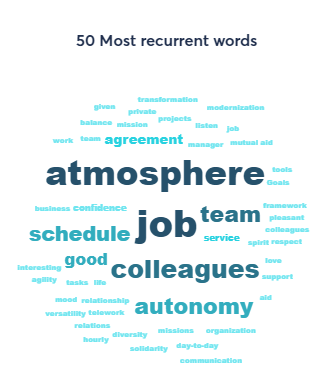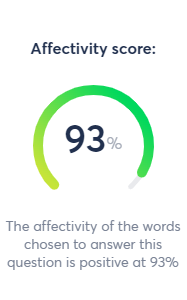How to make the most of your survey comments
Au programme :
Le récap de l’article
Find out how to use your survey responses effectively with our simple and effective tool.
Natural Language processing (NLP) in Zest
In short, NLP concerns training computers to “understand” the content of a piece of text. This field of research is at the intersection between machine learning and linguistics. Concretely, Zest uses NLP to automatically analyse comments in two different ways:-
Word clouds
- The things I most appreciate in my life at work (3 major points).

Analyse multiple languages…
Furthermore, this feature also allows comments in different languages to be processed and analysed using a shared database. Practically speaking, this means that Zest has the capacity to analyse and compare all comments, whatever language they may be written in. This is of course a huge advantage to multinational organisations or those with a diverse workforce who work in many different languages.-
Sentiment analysis

To go even further…
In addition to these methods of analysis, which are automatically available online & in the app, Zest offers an additional support service to delve deeper into the interpretation of your survey comments.-
Mapping
Without having to read each comment individually, this method aids the interpretation of associations between words making up comments by visualising these connections and their strength. For example, when employees talk about the relationship with their manager, what words come next?
-
Clustering
This method groups the most used words (for example those which appear in the word cloud) according to a particular theme to create “clusters”. Through the use of dendrograms, relationships between sets of data are visualised, enabling a deeper interpretation of results regarding the key subjects for your employees.

